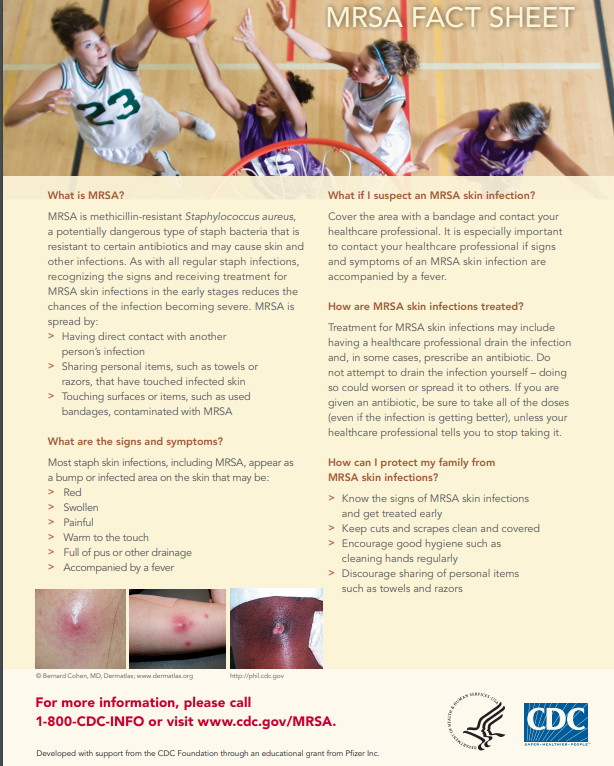
MRSA
MRSA stands for methicillin-resistant Staphylococcus aureus, a type of bacteria that is resistant to several antibiotics.
Anyone can get MRSA. The risk increases with activities or places that involve crowding, skin-to-skin contact, shared equipment or supplies and swimming in contaminated water.
Some of the people who carry MRSA can go on to get a MRSA infection. Non-intact skin, such as when there are abrasions or incisions, is often the site of an MRSA infection. Athletes, daycare and school students, military personnel in barracks, and those who receive inpatient medical care or have surgery or medical devices inserted in their body are at higher risk of MRSA infection.
You can take these steps to reduce your risk of MRSA infection:
--Maintain good hand and body hygiene. Clean hands often, and clean your body regularly, especially after exercise.
--Keep cuts, scrapes, and wounds clean and covered until healed.
--Avoid sharing personal items such as towels and razors.
--Get care early if you think you might have an infection.
Most S. aureus skin infections, including MRSA, appear as a bump or infected area on the skin that might be:
--red
--swollen
--painful
--warm to the touch
--full of pus or other drainage
--accompanied by a fever




